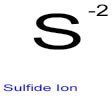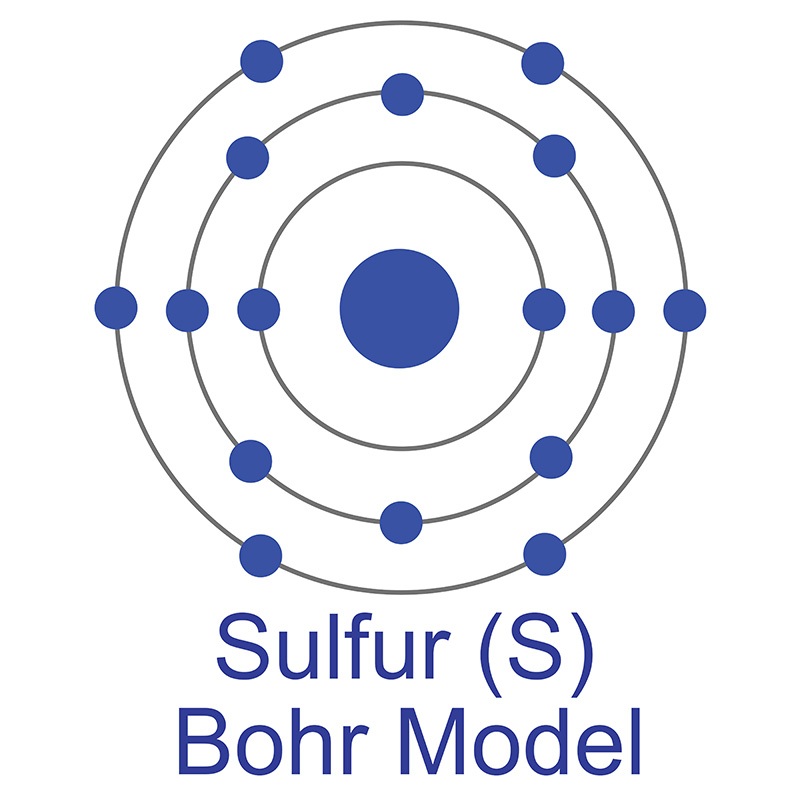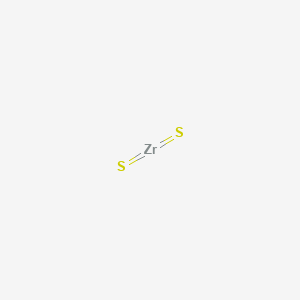SECTION 1. IDENTIFICATION
Product Name: Zirconium Sulfide
Product Number: All applicable American Elements product codes, e.g. ZR-S-02
, ZR-S-03
, ZR-S-04
, ZR-S-05
CAS #: 12039-15-5
Relevant identified uses of the substance: Scientific research and development
Supplier details:
American Elements
10884 Weyburn Ave.
Los Angeles, CA 90024
Tel: +1 310-208-0551
Fax: +1 310-208-0351
Emergency telephone number:
Domestic, North America: +1 800-424-9300
International: +1 703-527-3887
SECTION 2. HAZARDS IDENTIFICATION
Classification of the substance or mixture
GHS07
Skin Irrit. 2 H315 Causes skin irritation.
Eye Irrit. 2A H319 Causes serious eye irritation.
STOT SE 3 H335 May cause respiratory irritation.
GHS label elements
The substance is classified and labeled according to the Globally Harmonized System (GHS).
Hazard pictograms

GHS07
Signal word
Warning
Hazard-determining components of labeling:
Zirconium(IV) sulfide, 99%
Hazard statements
H315 Causes skin irritation.
H319 Causes serious eye irritation.
H335 May cause respiratory irritation.
Precautionary statements
P101 If medical advice is needed, have product container or label at hand.
P102 Keep out of reach of children.
P103 Read label before use.
P262 Do not get in eyes, on skin, or on clothing.
P280 Wear protective gloves/protective clothing/eye protection/face protection.
P305+P351+P338 IF IN EYES: Rinse cautiously with water for several minutes. Remove contact lenses, if present and easy to do. Continue rinsing.
P304+P340 IF INHALED: Remove victim to fresh air and keep at rest in a position comfortable for breathing.
P403+P233 Store in a well-ventilated place. Keep container tightly closed.
P501 Dispose of contents/container in accordance with local/regional/national/internationalregulations.
Classification system:
NFPA ratings (scale 0 - 4)
1
0
2
W
Health = 1
Fire = 0
Reactivity = 2
The substance demonstrates unusual reactivity with water.
HMIS-ratings (scale 0 - 4)
HEALTH
FIRE
REACTIVITY
1
0
2
Health = 1
Fire = 0
Reactivity = 2
Other hazards
Results of PBT and vPvB assessment
PBT: N/A
vPvB: N/A
SECTION 3. COMPOSITION/INFORMATION ON INGREDIENTS
Substances
CAS # / Substance Name
12039-15-5 Zirconium(IV) sulfide, 99%
Identification number(s)
EC number: 234-885-1
SECTION 4. FIRST AID MEASURES
Description of first aid measures
If inhaled:
In case of unconsciousness place patient stably in side position for transportation.
In case of skin contact:
Immediately wash with soap and water; rinse thoroughly.
In case of eye contact:
Rinse opened eye for several minutes under running water. If symptoms persist, consult a doctor.
If swallowed:
If symptoms persist consult doctor.
Most important symptoms and effects, both acute and delayed
No data available
Indication of any immediate medical attention and special treatment needed
No data available
SECTION 5. FIREFIGHTING MEASURES
Extinguishing media
Suitable extinguishing agents:
CO2, extinguishing powder or water spray. Fight larger fires with water spray or alcohol resistant foam.
For safety reasons unsuitable extinguishing agents:
Water
Special hazards arising from the substance or mixture
No data available
Advice for firefighters
Protective equipment:
Mouth respiratory protective device.
SECTION 6. ACCIDENTAL RELEASE MEASURES
Personal precautions, protective equipment and emergency procedures
Mount respiratory protective device.
Use personal protective equipment. Keep unprotected persons away.
Environmental precautions:
No special measures required.
Methods and materials for containment and cleanup:
Ensure adequate ventilation.
Do not flush with water or aqueous cleansing agents
Reference to other sections
See Section 7 for information on safe handling.
See Section 8 for information on personal protection equipment.
See Section 13 for disposal information.
SECTION 7. HANDLING AND STORAGE
Precautions for safe handling
No special precautions are necessary if used correctly.
Information about protection against explosions and fires:
Keep ignition sources away - Do not smoke.
Conditions for safe storage, including any incompatibilities:
Requirements to be met by storerooms and receptacles:
No special requirements.
Information about storage in one common storage facility:
Do not store together with acids.
Further information about storage conditions:
Keep receptacle tightly sealed.
Store in cool, dry conditions in well sealed receptacles.
Specific end use(s)
No data available
SECTION 8. EXPOSURE CONTROLS/PERSONAL PROTECTION
Additional information about design of technical systems:
No further data; see item 7.
Control parameters
Components with limit values that require monitoring at the workplace:
Not required.
Additional information:
The lists that were valid during the creation were used as basis.
Exposure controls
Personal protective equipment:
General protective and hygienic measures:
Keep away from foodstuffs, beverages and feed.
Immediately remove all soiled and contaminated clothing.
Wash hands before breaks and at the end of work.
Avoid contact with the eyes and skin.
Breathing equipment:
In case of brief exposure or low pollution use respiratory filter device. In case of intensive or longer exposure use respiratory protective device that is independent of circulating air.
Protection of hands:
Protective gloves
The glove material has to be impermeable and resistant to the product/ the substance/ the preparation.
Due to missing tests no recommendation to the glove material can be given for the product/ the preparation/ the chemical mixture.
Selection of the glove material on consideration of the penetration times, rates of diffusion and the degradation
Material of gloves
The selection of the suitable gloves does not only depend on the material, but also on further marks of quality and varies from manufacturer to manufacturer.
Penetration time of glove material
The exact break through time has to be found out by the manufacturer of the protective gloves and has to be observed.
Eye protection:
Tightly sealed goggles
SECTION 9. PHYSICAL AND CHEMICAL PROPERTIES
Information on basic physical and chemical properties
Appearance:
Form: Powder
Color: Red-brown
Odor: Sulphurous
Odor threshold: No data available.
pH: N/A
Melting point/Melting range: 1550 °C (2822 °F)
Boiling point/Boiling range: Undetermined.
Flash point: N/A
Flammability (solid, gas): Contact with water liberates extremely flammable gases.
Ignition temperature:
Decomposition temperature: No data available.
Autoignition: No data available.
Danger of explosion: No data available.
Explosion limits:
Lower: No data available
Upper: No data available.
Vapor pressure: no data hPa
Density at 20 °C (68 °F): 3.87 g/cm3 (32.295 lbs/gal)
Relative density: No data available.
Vapor density: N/A
Evaporation rate: N/A
Solubility in Water (H2O): Insoluble.
Partition coefficient (n-octanol/water): No data available.
Viscosity:
Dynamic: N/A
Kinematic: N/A
Organic solvents: 0.0 %
Solids content: 100.0 %
Other information
No data available
SECTION 10. STABILITY AND REACTIVITY
Reactivity
Chemical stability
Thermal decomposition / conditions to be avoided:
No decomposition if used according to specifications.
Possibility of hazardous reactions
Contact with water releases flammable gases.
Conditions to avoid
No data available
Incompatible materials:
No data available
Hazardous decomposition products:
No dangerous decomposition products known.
SECTION 11. TOXICOLOGICAL INFORMATION
Information on toxicological effects
Acute toxicity:
Primary irritant effect:
on the skin:
Irritant to skin and mucous membranes.
on the eye:
Irritating effect.
Sensitization:
No sensitizing effects known.
SECTION 12. ECOLOGICAL INFORMATION
Toxicity
Aquatic toxicity:
No data available
Persistence and degradability
No data available
Bioaccumulative potential
No data available
Mobility in soil
No data available
Additional ecological information:
Not known to be hazardous to water.
Results of PBT and vPvB assessment
PBT:
N/A
vPvB:
N/A
Other adverse effects
No data available
SECTION 13. DISPOSAL CONSIDERATIONS
Waste treatment methods
Recommendation:
Must not be disposed of together with household garbage. Do not allow product to enter drains, sewage systems, or other water courses system.
Uncleaned packagings:
Recommendation:
Disposal must be made according to official regulations
SECTION 14. TRANSPORT INFORMATION
UN-Number
DOT, ADN, IMDG, IATA
not regulated
UN proper shipping name
DOT, ADN, IMDG, IATA
not regulated
Transport hazard class(es)
DOT, ADN, IMDG, IATA
Class
not regulated
Packing group
DOT, IMDG, IATA
not regulated
Environmental hazards:
Marine pollutant:
No
Special precautions for user
N/A
Transport in bulk according to Annex II of
MARPOL73/78 and the IBC Code
N/A
SECTION 15. REGULATORY INFORMATION
Safety, health and environmental regulations/legislation specific for the substance or mixture
Sara
Section 355 (extremely hazardous substances):
Substance is not listed.
Section 313 (Specific toxic chemical listings):
Substance is not listed.
TSCA (Toxic Substances Control Act):
Substance is listed.
Proposition 65
Chemicals known to cause cancer:
Substance is not listed.
Chemicals known to cause reproductive toxicity for females:
Substance is not listed.
Chemicals known to cause reproductive toxicity for males:
Substance is not listed.
Chemicals known to cause developmental toxicity:
Substance is not listed.
Carcinogenic categories
EPA (Environmental Protection Agency)
Substance is not listed.
TLV (Threshold Limit Value established by ACGIH)
Substance is not listed.
NIOSH-Ca (National Institute for Occupational Safety and Health)
Substance is not listed.
SECTION 16. OTHER INFORMATION
Safety Data Sheet according to Regulation (EC) No. 1907/2006 (REACH). The above information is believed to be correct but does not purport to be all inclusive and shall be used only as a guide. The information in this document is based on the present state of our knowledge and is applicable to the product with regard to appropriate safety precautions. It does not represent any guarantee of the properties of the product. American Elements shall not be held liable for any damage resulting from handling or from contact with the above product. See reverse side of invoice or packing slip for additional terms and conditions of sale. COPYRIGHT 1997-2022 AMERICAN ELEMENTS. LICENSED GRANTED TO MAKE UNLIMITED PAPER COPIES FOR INTERNAL USE ONLY.
 The number of electrons in each of Zirconium's shells is 2, 8, 18, 10, 2 and its electron configuration is [Kr]4d2 5s2. The zirconium atom has a radius of 160 pm and a Van der Waals radius of 186 pm. Zirconium was discovered by Martin Heinrich Klaproth in 1789 and first isolated by Jöns Jakob Berzelius in 1824. In its elemental form, zirconium has a silvery white appearance that is similar to titanium. Zirconium's principal mineral is zircon (zirconium silicate).
The number of electrons in each of Zirconium's shells is 2, 8, 18, 10, 2 and its electron configuration is [Kr]4d2 5s2. The zirconium atom has a radius of 160 pm and a Van der Waals radius of 186 pm. Zirconium was discovered by Martin Heinrich Klaproth in 1789 and first isolated by Jöns Jakob Berzelius in 1824. In its elemental form, zirconium has a silvery white appearance that is similar to titanium. Zirconium's principal mineral is zircon (zirconium silicate).  Zirconium is commercially produced as a byproduct of titanium and tin mining and has many applications as a opacifier and a refractory material. It is not found in nature as a free element. The name of zirconium comes from the mineral zircon, the most important source of zirconium, and from the Persian wordzargun, meaning gold-like.
Zirconium is commercially produced as a byproduct of titanium and tin mining and has many applications as a opacifier and a refractory material. It is not found in nature as a free element. The name of zirconium comes from the mineral zircon, the most important source of zirconium, and from the Persian wordzargun, meaning gold-like.
 The number of electrons in each of Sulfur's shells is 2, 8, 6 and its electron configuration is [Ne] 3s2 3p4. In its elemental form, sulfur has a light yellow appearance. The sulfur atom has a covalent radius of 105 pm and a Van der Waals radius of 180 pm. In nature, sulfur can be found in hot springs, meteorites, volcanoes, and as galena, gypsum, and epsom salts. Sulfur has been known since ancient times but was not accepted as an element until 1777, when Antoine Lavoisier helped to convince the scientific community that it was an element and not a compound.
The number of electrons in each of Sulfur's shells is 2, 8, 6 and its electron configuration is [Ne] 3s2 3p4. In its elemental form, sulfur has a light yellow appearance. The sulfur atom has a covalent radius of 105 pm and a Van der Waals radius of 180 pm. In nature, sulfur can be found in hot springs, meteorites, volcanoes, and as galena, gypsum, and epsom salts. Sulfur has been known since ancient times but was not accepted as an element until 1777, when Antoine Lavoisier helped to convince the scientific community that it was an element and not a compound.
